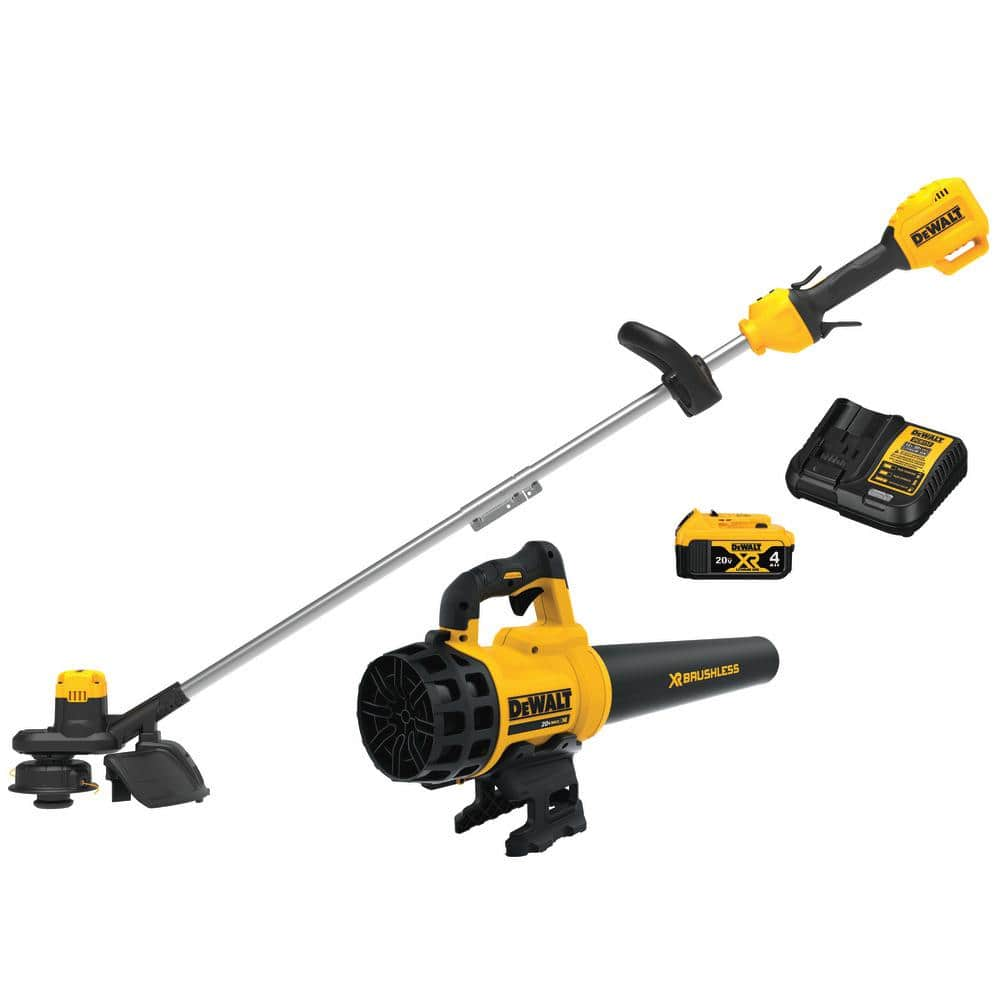


The weight-balanced design, rubber overmold grip on the handles, and ergonomic throttle trigger reduce operator fatigue for extended use. The 59-inch straight shaft offers excellent reach beneath shrubs and into tight corners. It makes a 17-inch cutting swath and features a speed-feed head that reduces the time it takes to reload the trimmer line by half. Powered by a lightweight, high-output 21.2cc two-cycle engine, this trimmer cuts with satisfyingly aggressive results in dense grass and coarse weeds, and uses less fuel than competitors with larger engines. Our top pick proves the adage, “You get what you pay for.” The Echo SRM-225i string trimmer costs a little more than some of the competitors we tested, but it delivered the best combination of easy start-up, overall working comfort, and grass trimming power at a reasonable price. We recorded our field notes and used a scoring rubric to organize the trimmers with award titles for this guide. Finally, we reloaded each cutting head with trimmer line and noted the difficulty. In each setting, we noted perceived cutting power, responsiveness to triggering, responsiveness to bumping out new trimmer line, operator comfort, and whether or not refueling was necessary to complete the project.

We then used each machine for 30 minutes of field mowing and 15 minutes each of lawn trimming and landscape bed trimming. The first operational tests were simply to start each machine and note the number of pulls required to get started. Our initial notes included measurable and easily observable features, such as each machine’s physical size and weight, whether it had a straight or curved shaft, and whether or not it could be used with other tool attachments. After unboxing and assembling each trimmer, we filled the fuel tank and got started. We spent 2 days testing the gas string trimmers in this article on regular lawn trimming, close-quarters trimming among shrubs and perennials in landscape beds, and mowing an overgrown field. To learn more about the trimmers on our list, we field-tested them in a variety of settings. Regardless of the engine size, machine weight, shaft length, and other measurables, much of the tool’s effectiveness depends on the operator’s physical build and personal preferences, along with the type of trimming to be done. Shopping for a string trimmer reveals that statistics can only forward the search so far. Photo: Debbie Wolfe for Bob Vila How We Tested the Best Gas String Trimmers

Later on, we will share more details on the individual models and how each one performed for us. Ahead, we discuss these and other important considerations that went into choosing the trimmers we tested for this article. The best gas string trimmer for your yard will depend on several important factors, including cutting width, shaft type, and engine size. While battery-powered trimmers may be a good choice for light trimming in small yards, gas string trimmers have the power that’s ideal for cutting through dense grass, weeds, and brush. This garden tool is a helpful addition to a large yard or any location with a lot of different obstacles, like trees, lawn ornaments, fencing, garden beds, and small structures. Grass and weeds can grow up the side of the shed, encroach on the garden, and climb the fence, but with a gas string trimmer-commonly called a weed wacker-unwanted plants can quickly and efficiently be removed.


 0 kommentar(er)
0 kommentar(er)
